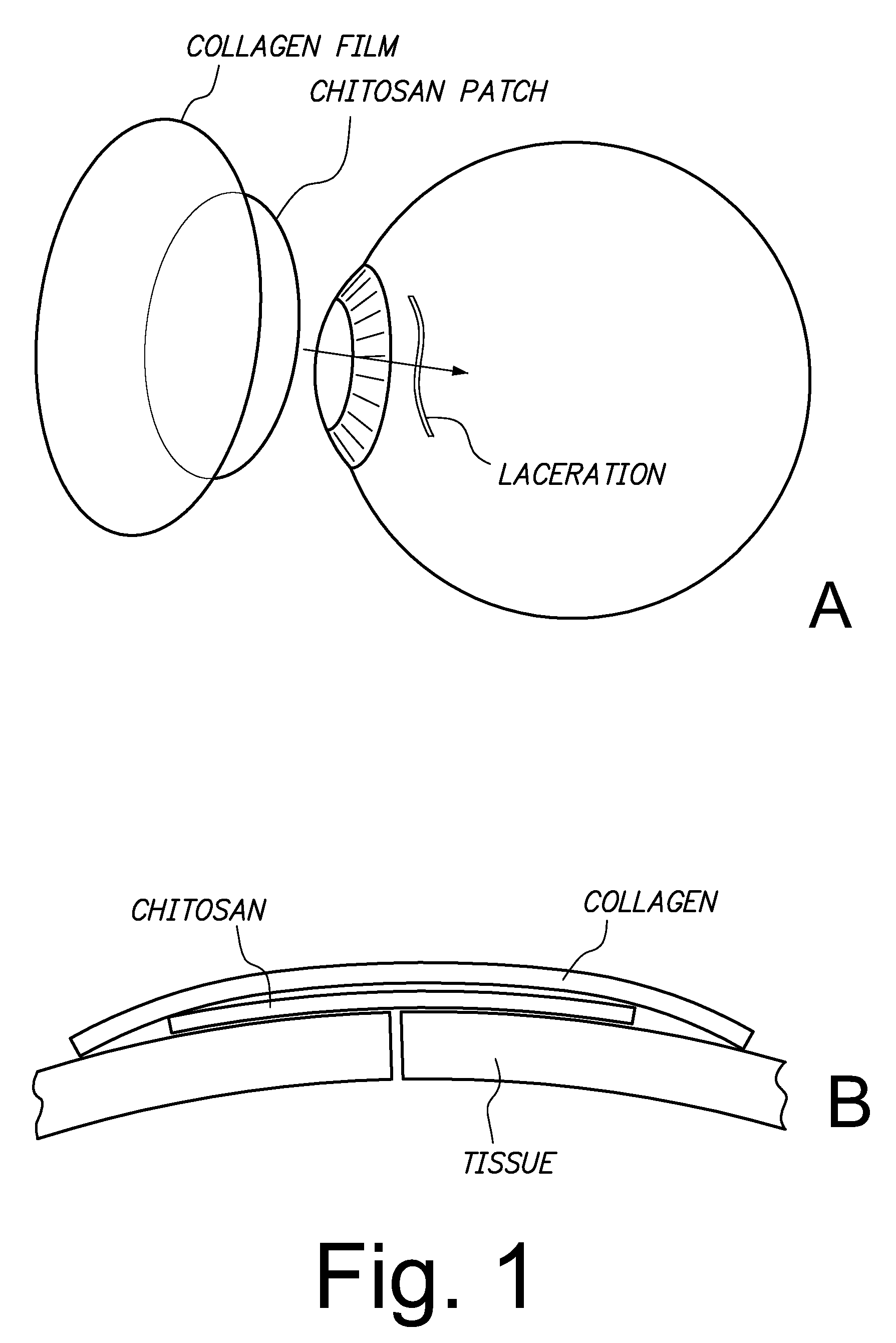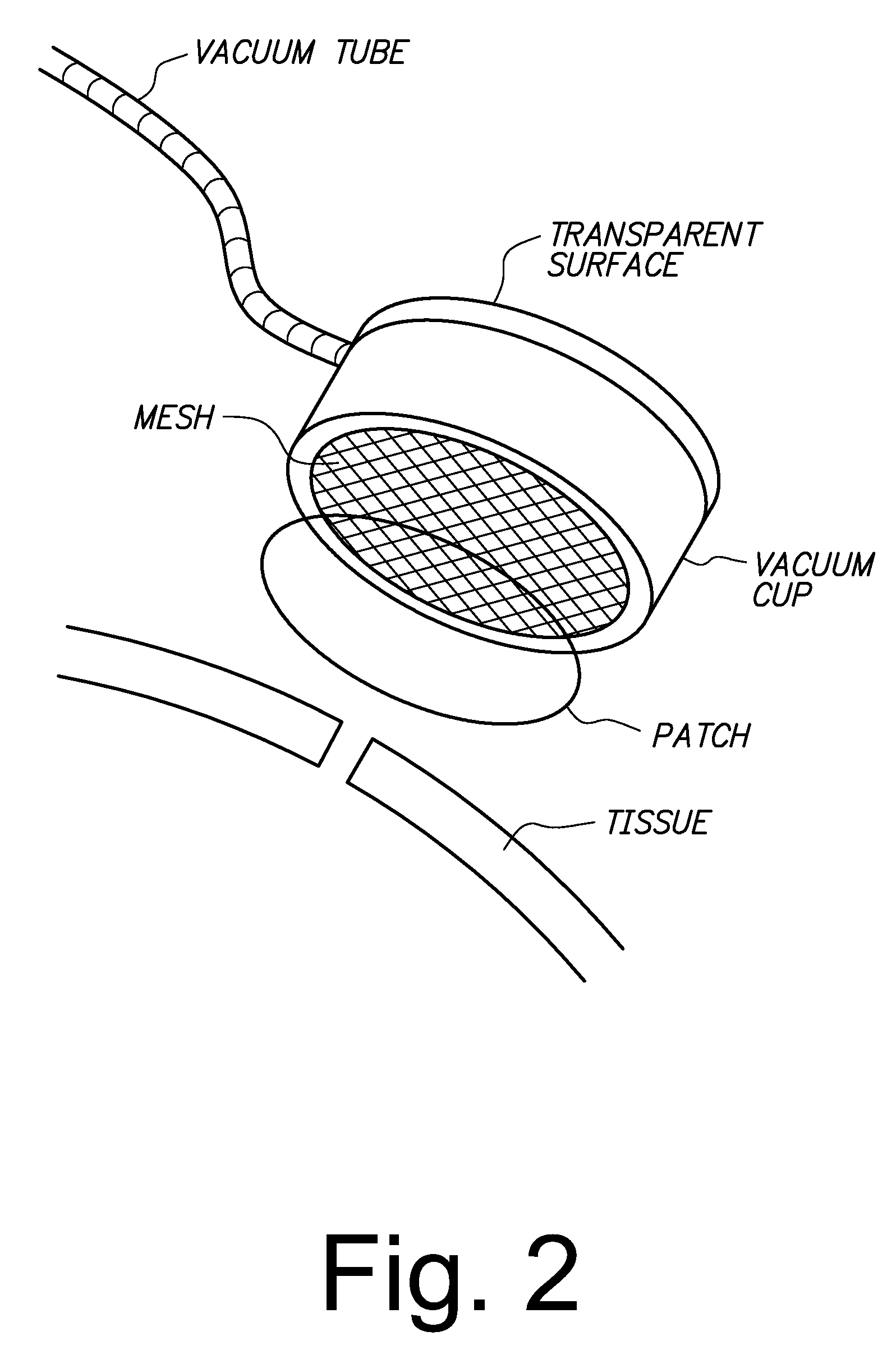Sutureless methods for laceration closure
a sutureless, laceration technology, applied in the field of sutureless laceration closure, can solve the problems of corneal trauma, current suturing techniques present limitations, insufficient tissue to effect suture repair,
- Summary
- Abstract
- Description
- Claims
- Application Information
AI Technical Summary
Benefits of technology
Problems solved by technology
Method used
Image
Examples
example
Robotic Laser Tissue Welding of Sclera Using Chitosan Films
[0030]In this study we evaluated scleral wound closure using chitosan film with and without the application of near-infrared laser irradiation using a robotic manipulator and a laser scanner. We incorporated the laser tissue welding into a surgical robotic platform in an attempt to provide greater control over some of the parameters that are critical for a successful outcome of the bonds, such as the scanning uniformity and consistency of the energy delivery.
[0031]The experiments were performed on porcine eyeballs with radial lacerations in the sclera. To compare the different methods, we evaluated their ability to effect a watertight closure, measured leak pressures and times to complete the closures using manual microsuturing as a baseline.
[0032]Preparation of Chitosan Film: In a series of preliminary experiments we explored several previously reported methods to produce the chitosan films:
[0033]Method 1: Cast Chitosan dis...
PUM
 Login to View More
Login to View More Abstract
Description
Claims
Application Information
 Login to View More
Login to View More - R&D
- Intellectual Property
- Life Sciences
- Materials
- Tech Scout
- Unparalleled Data Quality
- Higher Quality Content
- 60% Fewer Hallucinations
Browse by: Latest US Patents, China's latest patents, Technical Efficacy Thesaurus, Application Domain, Technology Topic, Popular Technical Reports.
© 2025 PatSnap. All rights reserved.Legal|Privacy policy|Modern Slavery Act Transparency Statement|Sitemap|About US| Contact US: help@patsnap.com



